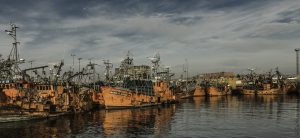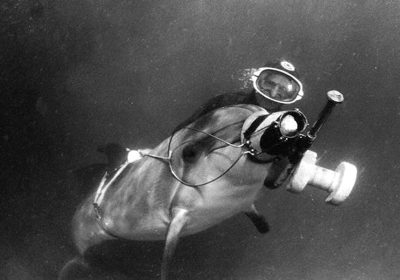De Faakto Intelligence Research Observatory
Environmental Crimes-An Open Source Intelligence Primer
Methodology–OSINT research
Background & Analysis
Environmental crimes are a wide ranging scope of offenses against the natural environment, flora, fauna, wildlife and the ecosystems they live in. Natural resources are exploited by organized crime groups that are often associated with other offenses such as narcotics smuggling, human trafficking, money laundering, corruption and document fraud (Interpol, 2019) Smuggling routes and criminal modus operandi, apply universally to both environmental and mainstream organized crime. Illegal fishing is notably symbiotic to the narcotics trade and human trafficking. Fishing vessels enjoy functional mobility and the unique capacity to blend into areas of operations for extended periods of time. Environmental crimes negatively impact a country’s natural resources and local communities which otherwise benefit from tourism and legal, sustainable trade. (U.S. Fish & Wildlife Service, 2019) Pollution crimes circumvent the responsible cost of waste disposal and dumping of toxic materials like electronic waste, chemicals and industrial waste into the ecosystem (Interpol, 2019) Illegal fishing depletes fish stocks and damages ecosystems threatening food security, and the economic, social and political stability of coastal nations. (Interpol, 2019) Illegal logging destroys biodiversity, and threatens the livelihoods of those reliant on forest resources. Criminal land clearing from illegal logging causes landslides and denies forest-dependent communities access to food, medicine and fuel. Illegal logging contributes directly to climate change and damages the delicate ecosystems where vulnerable species reside. Environmental crimes are not victimless and significant resources must be dedicated to countering criminal networks engaging in ecological offenses. Laws require strengthening. Law enforcement activities need appropriate resources for intelligence, surveillance, patrolling, and enforcement. Corruption must be minimized and the actors of environmental crimes must be prosecuted. Vulnerable environmental areas necessitate access control to counter criminal networks and poachers. Consumer campaigns and general education about environmental crimes need development and delivery to promote environmental protection. (Grid Arendal, 2014)
Wildlife Crime

What is a Wildlife Crime?
- Wildlife crime is any action which contravenes current laws governing the protection of wild animals and plants (UK National Wildlife Crime Unit, 2019)
What are Examples of Wildlife Crimes?
- Poaching activities-mammals, fur bearing animals and fish
- Egg theft & egg collection
- Persecution of wildlife-examples include bird of prey persecution, fur bearing animal persecution
- Non registration of certain birds and animals that require licensing (U.S. Fish & Wildlife Service, 2019)
Illegal trade In Animal Products
- Ivory
- Tortoises
- Rhino horn
- Other protected species covered by the Convention on International Trade in Endangered Species
- Caviar (U.S. Fish & Wildlife Service, 2019)
Why is Wildlife Crime a Problem?
- Wildlife species are threatened by illegal and unsustainable wildlife trade
- Illegal Wildlife crimes and trade negatively impacts a country’s natural resources and local communities that might otherwise benefit from tourism or legal, sustainable trade (U.S. Fish & Wildlife Service, 2019)
- Wildlife crimes often span national borders
- Wild flora and fauna is exploitable by criminals
- Other illegal activities are often associated with wildlife crimes, including money laundering, corruption and document fraud (Interpol, 2019)
How Much is the Illegal Wildlife Trade Worth?
- The illegal trade in wildlife is estimated to be worth up to USD 20 billion per year (Interpol, 2019)
How is Illegal Wildlife Trade Countered?
The World Wildlife Federation Recommends,
- Anti-poaching Ranger Teams
- Anti-Trafficking Activities-which focus on key hotspots, trafficking routes
- Change consumer behaviour and reduce demand for illegal wildlife products
- Pressuring governments to improve and enforce regulations to make it possible to end the illegal wildlife trade (WWF, 2019)
Fisheries Crime

What is Illegal Fishing?
- Illegal fishing consists of fishing activities conducted by foreign vessels without permission in waters under the jurisdiction of another state
- Contravention of a states fisheries law and regulations (World Ocean Review, 2019)
What are Illegal Fishing Methodologies?
- Over fishing
- Taking Endangered fish species
- Improper reporting of fish taken
- Unregulated fishing
- Under reported fishing
Why is Illegal Fishing a Problem?
- Illegal fishing depletes fish stocks and damages ecosystems
- Fisheries regulators encounter difficulties properly estimating fish stocks-future catch quotas incorrectly determined
- Fisheries regulators are unable to manage fishing grounds with inaccurate information
- Some countries lack enforcement resources and can not control overfishing (World Ocean Review, 2019)
- Food security is threatened, and the economic, social and political stability of coastal nations (Interpol, 2019)
- Criminals concurrently use fishing vessels to traffic drugs and people
- Criminal networks also use the proceeds of large-scale commercial fishing to finance other illegal activities (Interpol, 2019)
How can Fisheries Crimes be Countered?
- Strengthen international regulations regarding shipping and vessels
- Develop domestic legislation designed to treat Illegal fishing as a crime
- Increasing the punishments of offenders
- Enhancement of monitoring and enforcement of fisheries crimes (Global Initiatives, 2019)
What is the Cost of Illegal Fishing?
- According to the Food and Agriculture Organization of the United Nations, IUU fishing represents up to 26 million tonnes of fish caught annually, valued at between $10 to $23 billion USD (Fishing & Oceans Canada, 2019)
Forestry Crimes

What is Forestry Crime?
Forestry crime is distinguished by three different types of illegal logging practises (ResearchGate, 2016)
- Informal logging
- Illegal logging resulting from forest conversion
- Other illegal forest activities
- Criminal logging- Operated by criminal networks
- Large scale illegal extraction-often selectively of a few valuable timber species
Why is Forestry Crime & Illegal Logging a Problem?
- Illegal logging destroys biodiversity and threatens the livelihoods of those reliant on forest resources
- Criminal land clearing can cause landslides and deny forest-dependent communities access to food, medicine and fuel
- Illegal logging contributes directly to climate change, accounting for an estimated 17 per cent of global carbon emissions – more than from all the world’s air, road, rail and shipping traffic combined
- The illegal trade of timber is worth billions of dollars every year
- Criminal groups exploit high-value endangered wood species, such as rosewood and mahogany
- Criminal networks of illegal loggers poach timber in protected areas, on indigenous lands or outside concession boundaries
- Crimes can occur at every point in the supply chain – harvesting, transportation, processing and selling
- Forestry crimes are often linked to other illegal activities such as document fraud, corruption and money laundering (Interpol, 2019)
How is Forestry Crime Countered?
- Combat corruption in the forestry sector-to eliminate illegal logging and illicit trade and corruption
- Empower local communities-enable their custodianship of natural habitats (Interpol, 2019)
- Strengthen Laws in consumer countries against imports of illegally harvested timber
- Specialized enforcement units-paramilitary training and arming of Rangers
- Extensive collaboration with police, Army, Navy and international experts
- Update and harmonize regulations across administrative borders
- Implement moratoriums in highly impacted areas
- Law enforcement-task force control of ports and transportation corridors
- Laws in consumer countries that address imports of illegally harvested timber
- Eliminate illegal wood from supply chain
- Minimize and control corruption
- Prosecution of actors, timber mafia heads and corporations
- Control access to protected areas
- General education- knowledge on environmental concerns and sustainable development
- Consumer awareness campaigns
- Law enforcement activities-surveillance, patrolling, arrest and prosecution of actors involved in illegal harvesting (Grid Arendal, 2014)
What is the Cost of Forestry Crime?
- According to a joint report produced by the United Nations Environment Programme (UNEP) and INTERPOL, the illegal logging, by organized crime groups, is estimated to be worth between USD 30 and 100 billion annually. (Forest Monitor, 2016)
Pollution Crime

What is Pollution Crime?
- Pollution Crime is when criminal organizations circumvent the responsible cost of waste disposal and dump toxic materials like electronic waste, chemicals and industrial waste into the ecosystem (Interpol, 2019)
Why is Pollution Crime a Problem?
- Pollution crime affects our health
- Toxic materials leach into water supplies
- The air we breathe becomes contaminated
- Precious ecosystems become contaminated
- Legitimate waste treatment facilities are economically undercut (Interpol, 2019)
- Criminal networks involved in waste trafficking are often involved in fraud, money laundering, human, drug and firearms trafficking (Interpol, 2019)
How is Pollution Crime Countered?
- Prosecute pollution crimes and seek substantial penalties
- Just punishment of offenders
- Incarceration in certain cases-to afford an adequate deterrence against other potential misconduct and environmental abuse
- Promote respect for environmental laws
- Removal of the competitive advantage and economic incentive realized by criminal networks engaging in environmental crimes (Boston College Environmental Affairs Law Review, 1986)
What is the Cost of Pollution Crime?
- The International Criminal Police Organization (INTERPOL) estimates the value of unregistered and informally handled, including illegally traded and dumped e-waste ranges from US $12.5 to US $18.8 billion annually. (UN Environment, 2015)
Resources
The Future of Fish – The Fisheries of the Future-World Ocean Review (2013) https://worldoceanreview.com/en/wor-2/fisheries/illegal-fishing/
Fisheries Crimes-Interpol (2019) https://www.interpol.int/en/Crimes/Environmental-crime/Fisheries-crime
Illegal Fishing-Global Initiative Against Transnational Organized Crime (2019) https://globalinitiative.net/illegal-fishing-the-overlooked-organized-environmental-crime/
Illegal, Unreported and Unregulated (IUU) Fishing-Fisheries & Oceans Canada (2019) http://www.dfo-mpo.gc.ca/international/isu-iuu-eng.htm
What is Wildlife Crime?-U.K. National Crime Wildlife Unit (2019) https://www.nwcu.police.uk/what-is-wildlife-crime/
Environmental Crime-Interpol (2019) https://www.interpol.int/en/Crimes/Environmental-crime/Wildlife-crime
Stopping the Illegal Wildlife Trade-WWF (2019) https://www.wwf.org.uk/what-we-do/area-of-work/stopping-illegal-wildlife-trade
Organized Forest Crime: A Criminological Analysis with Suggestions from Timber Forensics-ResearchGate (2016) (https://www.researchgate.net/publication/311354158_Organized_Forest_Crime_A_Criminological_Analysis_with_Suggestions_from_Timber_Forensics
Forestry Crime-Interpol (2019) https://www.interpol.int/en/Crimes/Environmental-crime/Forestry-crime
Countering Illegal Logging – Measures and their Effect-Grid Arendal (2014) http://old.grida.no/publications/rr/orangutan/page/2881.aspx
Illegal logging costs between 30 and 100 billion USD annually-Forest Monitor (2016) https://www.forest-monitor.com/en/illegal-logging-costs-between-30-and-100-billion-usd-annualy/
Pollution Crime-Interpol (2019) https://www.interpol.int/en/Crimes/Environmental-crime/Pollution-crime
Countering Environmental Crimes- Boston College Environmental Affairs Law Review- (1986) https://pdfs.semanticscholar.org/ed24/2cb5d7c6562a3a648d46421fc71e7f3e3238.pdf
Illegally Traded and Dumped E-Waste Worth 19 Billion Annually-UN Environment (2015) https://www.unenvironment.org/news-and-stories/press-release/illegally-traded-and-dumped-e-waste-worth-19-billion-annually-poses






